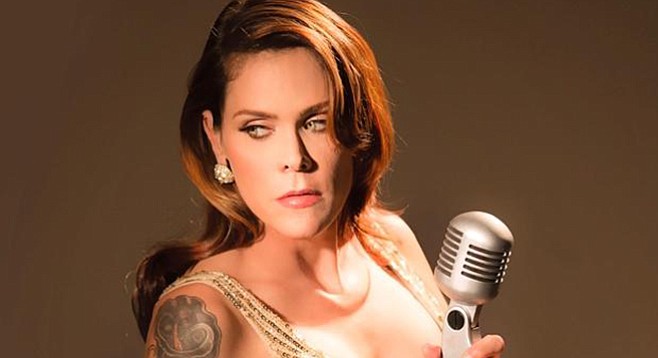 Facebook
Facebook
 X
X
 Instagram
Instagram
 TikTok
TikTok
 Youtube
Youtube

She is the embodiment of every one of the best of the blues stylists I grew up listening to during the ’60s and the ’70s. Beth Hart has got Janis Joplin and Etta James and even less obvious choices, such as early Robert Plant, deep in the fiber of her vocals. She’s got that going on, but with a hard edge: the blues in tattoos, combat boots, and a little black cocktail dress. And while Joe Bonamassa (a man who plays no wrong note but has no true tone to call his own) is the bigger star, Hart has been gaining steady ground and packing houses. It’s no surprise that Bonamassa collaborates with her, for she brings hormones on full blast meltdown passion to his perfect but otherwise soul-less shows. In the exchange, Bonamassa is becoming a household word and Hart, well, not so much. I suspect that’s going to change.
At 43, the L.A. native is a true badass blues shouter. Her second album, 1999’s Screamin’ for My Supper got her into the headlights of the music industry. Not that Hart was a stranger to the grind — in the 1990s, she left a Star Search episode with a little cash. She cranked out another hit in 2000 (“L.A. Song — Out of This Town”), and for a moment she looked as if ready to dominate. But drug use landed her in jail and put her on the shelf until 2004.
That’s when she re-started in earnest and, like most American blues rockers, made her bones in Europe. Here in America, labels missed the point and tried to market her as a pop act. Did incarceration make her better at doing the blues? I think not. Recovery made careful and better choices of Beth Hart’s life, but whatever grit she has was already there. Sobriety helped her let it out, take it to the edge, and survive the process.
Matt Andersen also performs.


She is the embodiment of every one of the best of the blues stylists I grew up listening to during the ’60s and the ’70s. Beth Hart has got Janis Joplin and Etta James and even less obvious choices, such as early Robert Plant, deep in the fiber of her vocals. She’s got that going on, but with a hard edge: the blues in tattoos, combat boots, and a little black cocktail dress. And while Joe Bonamassa (a man who plays no wrong note but has no true tone to call his own) is the bigger star, Hart has been gaining steady ground and packing houses. It’s no surprise that Bonamassa collaborates with her, for she brings hormones on full blast meltdown passion to his perfect but otherwise soul-less shows. In the exchange, Bonamassa is becoming a household word and Hart, well, not so much. I suspect that’s going to change.
At 43, the L.A. native is a true badass blues shouter. Her second album, 1999’s Screamin’ for My Supper got her into the headlights of the music industry. Not that Hart was a stranger to the grind — in the 1990s, she left a Star Search episode with a little cash. She cranked out another hit in 2000 (“L.A. Song — Out of This Town”), and for a moment she looked as if ready to dominate. But drug use landed her in jail and put her on the shelf until 2004.
That’s when she re-started in earnest and, like most American blues rockers, made her bones in Europe. Here in America, labels missed the point and tried to market her as a pop act. Did incarceration make her better at doing the blues? I think not. Recovery made careful and better choices of Beth Hart’s life, but whatever grit she has was already there. Sobriety helped her let it out, take it to the edge, and survive the process.
Matt Andersen also performs.
Comments